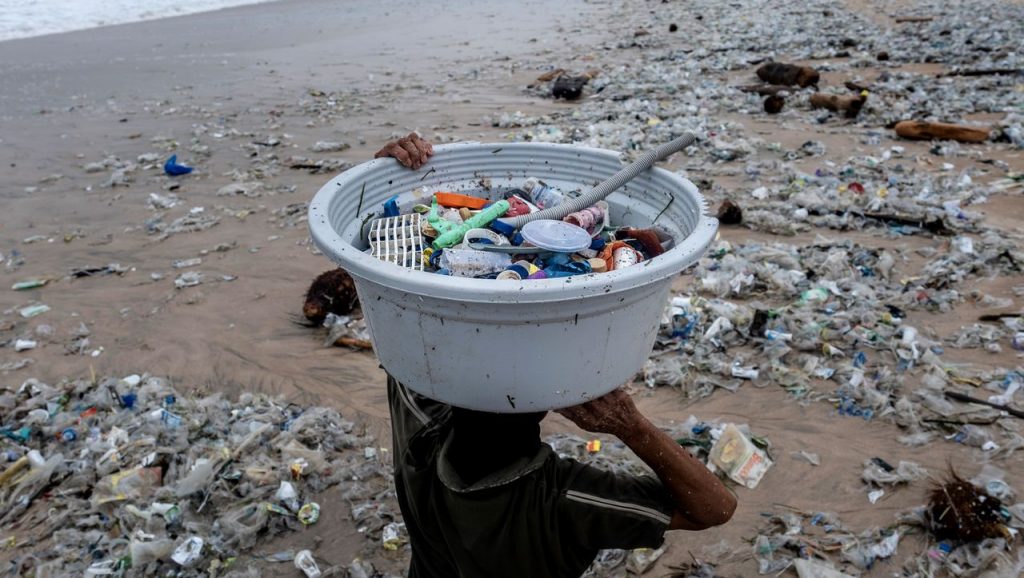Plastic cutlery, plastic straws or disposable Styrofoam cups – these disposable products should be after one EU directive from 3 July 2021 no longer give. Anyone who sells plastic knives, forks, or other items for which alternatives have long been found, is committing an administrative offence.
But environmental activists complain that the ban is not enough. And now a new study supports them. according to chat “Science” magazine publication, annual plastic pollution in water and on land could nearly double from 2016 to 2025 if humans continue as before. According to the research team, the global input of plastic into lakes, rivers and oceans alone was estimated at 9 to 23 million tons in 2016. GermanyAnd the Sweden And the Norway In a review article. A similar amount (13 to 25 million tons) also landed on Earth that year. Within four years, the plastic mountain in the environment can grow a maximum of 50 million tons per year.
“Plastic is deeply embedded in our society and seeps into the environment everywhere, even in countries with good waste-processing infrastructure,” said Matthew MacLeod of Stockholm University. Emissions tend to increase, although awareness of plastic pollution in science and the public has increased significantly in recent years.
Researchers from the Alfred Wegener Institute (Helmholtz Center for Polar and Marine Research, AWI) in Bremerhaven and the Helmholtz Center for Environmental Research (UFZ) also participated in the review article. Leipzig included. AWI’s Mine Tekman cautioned against the impression that anything could be magically recycled if plastic waste was properly separated.
“Technologically, plastic recycling has many limitations, and countries with good infrastructure export their plastic waste to countries with poor facilities,” she says. There is also a fundamental problem with non-biodegradable materials. It therefore calls for drastic measures, such as banning the export of plastic waste, unless it is done in a country with better recycling.
Damage Indicators
Annika Janke of the UFZ explained that remote areas are particularly threatened by plastic waste. There, plastic waste cannot be removed by cleaning. Previous studies have shown how dangerous it is to flood some islands with plastic waste, for example. On the uninhabited island of Henderson in the Pacific Ocean, for example, was found The largest density of plastic waste It is measured all over the world.
The weathering of large plastic pieces inevitably leads to the formation of a large number of them Microparticles and nanoplasticswhich have already been discovered in many animals as well as in humans. Although the effects on living organisms have not yet been thoroughly researched, there are already initial indications of harm to fish. Because when it’s released in nature, the chemicals that were added to the plastic are also washed away. Thus the huge amounts of plastic could have implications on a global scale in the future. Ultimately, development may be irreversible, according to the AWI.
In addition to the environmental damage that plastic pollution can cause from animal screams alone and the toxic effects, the research team also cautioned that, when combined with other environmental factors, it could have far-reaching or even global effects in remote areas. And on the climate Important carbon pumpBecause the oceans are the world’s largest reservoir of climate-damaging carbon dioxide. Plastic may act as an additional stressor in this cycle.
MacLeod concludes, “The cost of ignoring the ongoing buildup of plastic pollution in the environment can be prohibitive. The most logical thing we can do is to act as quickly as possible to reduce the amount of plastic entering the environment.”
Recently, a study showed that not only in Asia or elsewhere, large amounts of plastic enter the environment through rivers, but also in Europe significantly. Plastic on the coast It is washed. The conclusion of the Spanish researchers was that most of the plastic comes from food and drink packaging to take away.

“Total coffee aficionado. Travel buff. Music ninja. Bacon nerd. Beeraholic.”






More Stories
Experts informed patients about the topic of cervical cancer
'Gaia BH3': A massive black hole lurks here – a falling star that led to the discovery
Comparing the size of the sun and the earth